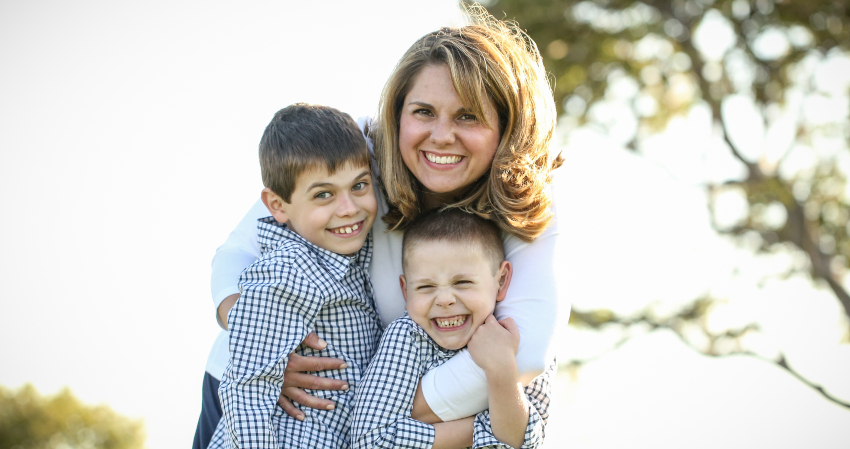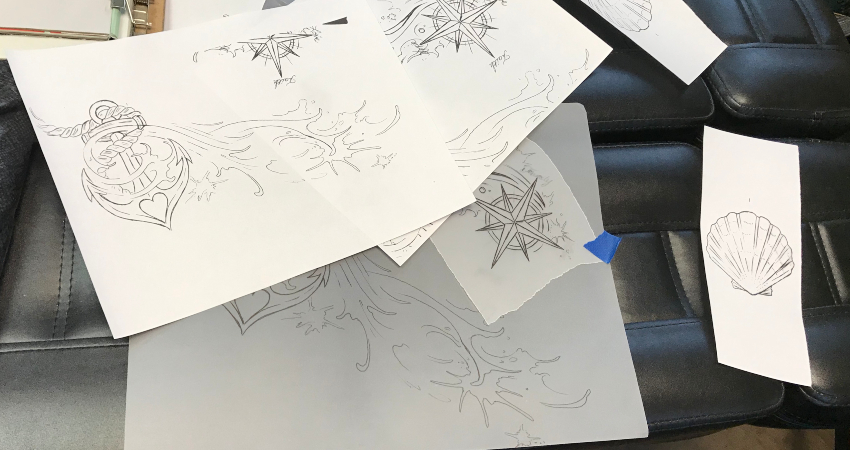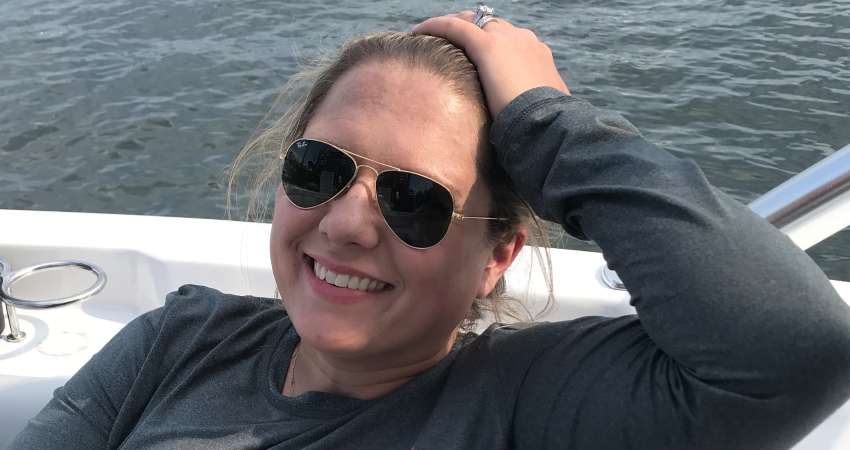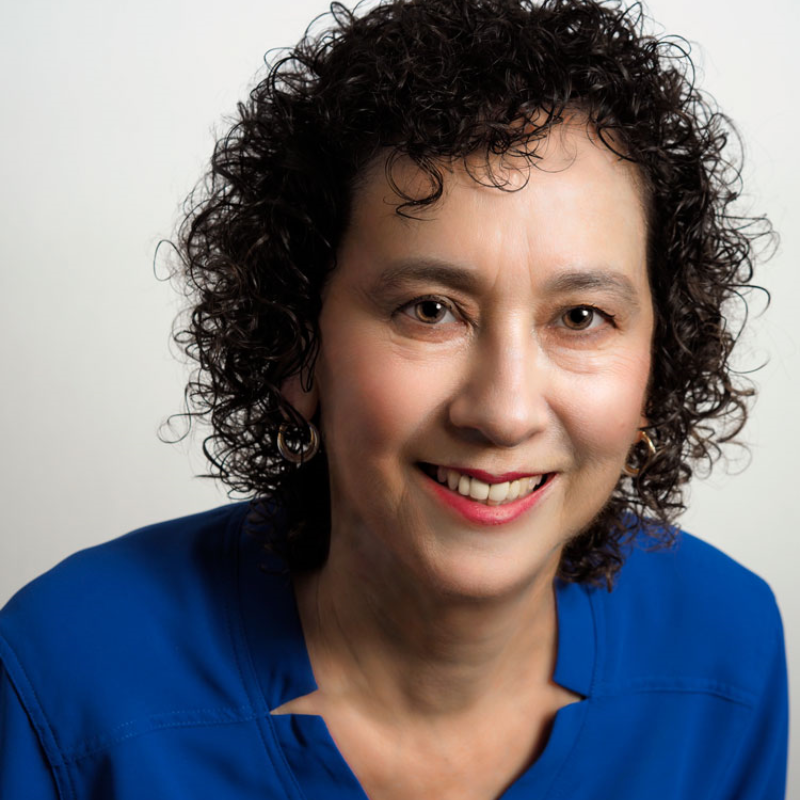Tattoos transform scars and spirit: Lindsay Northrop
- 07/26/19
 It has been 5 years and a long road since Lindsay Northrop’s 2014 diagnosis with stage I breast cancer. Initially, she had a double mastectomy, chemotherapy, and breast reconstruction with implants. She was 36.
It has been 5 years and a long road since Lindsay Northrop’s 2014 diagnosis with stage I breast cancer. Initially, she had a double mastectomy, chemotherapy, and breast reconstruction with implants. She was 36.
Two years later, a recurrence in her lymph nodes led to more treatments: surgery, chemotherapy, radiation, and her decision to have her ovaries and fallopian tubes removed. Later, reconstruction revision surgery, for damage caused by the radiation, replaced her original implants and took out scar tissue. Between therapies, recoveries, and caring for two young sons, Lindsay was busy.
In 2019, there was something she still wanted to do: replace her missing nipples and areolas with tattoos. “I said to my husband, ‘For my birthday, I want to get my tattoos done,’” says Lindsay, now age 41, who lives in Marblehead, Massachusetts.
She spoke with LBBC contributing writer Robin Warshaw about taking that step.
Robin: Early on, did you think about rebuilding your nipples and areolas surgically or were you only thinking of re-creating them with tattoos?
Lindsay: When I first had a double mastectomy, I didn’t spare my nipples, so I would joke that I looked like Barbie (breast mounds without nipples or areolas). I never really considered having my nipples rebuilt through surgery. The plastic surgeon presented that as an option, but I wasn't interested in having another surgery. The thought of not having nipples wasn't a big deal to me, so I decided against that procedure.
I looked online into having tattoos and it was amazing what they could do. I thought briefly about getting nipple and areola tattoos but once I started researching I came across all of these images of post-mastectomy tattoos that were really creative and artistic.
I saw one where a woman had a bra drawn on over her scars. It looked really cool, like she was wearing a lacy, pretty bra. I’ve seen people do flowers. Some did more extensive designs over the chest and down over the ribs.
I realized I wanted a beautiful piece of artwork to cover my scars instead of areola tattoos. I decided on mermaid shells as they would cover my vertical, rather long scars. Since I love the ocean, I thought the shells would be perfect.
Robin: Did you talk with others about having decorative tattoos instead of nipples?
Lindsay: Sometimes, when I’d tell people, they’d almost laugh. And I’d say, “Yes, really. Why not?” It’s kind of like a blank canvas. I can take it in any direction.
Even if I did get an areola tattoo, it wouldn’t cover the scar because the scar was long. I really just didn’t want to see the scars anymore. I figured that could be a great way they could be hidden.
Robin: Did you feel any pressure to get the tattoos right after your first surgery?
Lindsay: It was always in back of my mind. Then I had the recurrence and it got put on the back burner.
With radiation, the skin was quite damaged. It took a long time to heal. I wanted to wait until I was sure there were no issues with the revision and then move forward with the tattoos.
 Robin: How did you choose a tattoo artist?
Robin: How did you choose a tattoo artist?
Lindsay: My plastic surgeon’s office recommended some local tattoo parlors with experience working on reconstructed breasts. I emailed one studio where the owner does areola tattoos. One of her artists specializes in nautical tattoos [Marblehead has beaches on the Atlantic Ocean] and also has experience tattooing over reconstructed breasts.
I met with him about a month before getting tattooed, talked with him about what I wanted, and showed him pictures on my phone of concepts I liked.
On the appointment day, he had a drawing of the shells laid out. He said, “What do you think? We can change it.” I said I really wanted the shell itself to have the same colors as an areola, peach shades. He said, “That’s a great idea!”
He put a paper on my breast with the sketch, just to see how it looked in the mirror. So I was able to gauge it that way.
Robin: What were your expectations about having the tattoos?
Lindsay: I thought, “This is gonna be fun. They’ll look great.” I really didn’t realize — until I was sobbing in front of the tattoo artist after he finished — it was such an empowering moment. You realize how you’ve taken your body back.
It was so powerful for me. I had spent the last 5 years looking at these scars and they really bummed me out. Getting changed, getting in the shower, you can’t get away from them. You look at them every day. Whether you like them or not, they’re there.
Robin: Did you feel anything while he was tattooing?
Lindsay: Because I’m mostly numb from the mastectomy, I didn’t have a ton of feeling. However, when he went to the outer edges of the shells, I could feel a little bit. I could feel pressure when he was working on it and manipulating the implant skin, because it’s so taut there.
My doctor gave me an antibiotic to prevent infection, and everything healed up fine. I was nervous about that.
Robin: Did getting the tattoos change how you felt about your body?
Lindsay: You recognize how much breast cancer takes from you. My body image took a big hit from all that treatment. I was really self-conscious about the scars and didn’t even want to look at them.
After getting the tattoos, I felt like me again. Almost like a better version of me, with something that I designed and created and thought about and really wanted. It made me kind of stand up a little taller and feel a little spunkier.
I feel like it changed my body image in a positive way. The artwork is beautiful, so I feel like I’m freer and not as embarrassed by my body.
I didn’t realize it until after I got the tattoos, but they were a really significant part of my healing.

Lindsay co-leads a cancer support group for young women at her local YMCA. She also volunteers with FORCE (Facing Our Risk of Cancer Empowered), an organization for those affected by hereditary breast, ovarian, and related cancers.
This article was supported by the Grant or Cooperative Agreement Number 1 U58 DP005403, funded by the Centers for Disease Control and Prevention. Its contents are solely the responsibility of the authors and do not necessarily represent the official views of the Centers for Disease Control and Prevention or the Department of Health and Human Services.
Stay connected
Sign up to receive emotional support, medical insight, personal stories, and more, delivered to your inbox weekly.


